They Promised Us Flying Cars...
... and flying cars we shall have. "It's a magical moment," one entrepreneur says.

This post is a guide to videos from a fascinating session I was part of last month. The session was about aircraft-technology innovations that might actually make a difference in the convenience and environmental sustainability of personal travel.
Yes, yes, we’ve heard things like this before. But I’ll point you toward some of the latest possibilities, references, and personalities, so you can consider them for yourself.
Before that: a reminder about a new event that is kicking off tomorrow. As mentioned in this previous post, I plan to begin a regular weekly series of live, hour-long, open discussion threads, roughly on the model of Reddit’s Ask Me Anything. The first one will be on Friday November 12, at 4pm Eastern/ 1pm Pacific/ 9pm GMT. It’s a bonus for paid subscribers, and shortly before the session on Friday I will email out a link to all on that paid list.
Now, flying cars.
“They promised us flying cars!” It’s the hoariest joke/lament in the tech world, shorthand for the uneven blessings of progress. Computer chips, web connections, “big data” storage and algorithms, and other tools of technology all get better, faster, and cheaper by the day. And we use them for… a zillion ways to distract ourselves, sell ads, and be spied upon or misinformed.
Meanwhile, where are the flying cars?
At last they are coming. This time for real—I think.
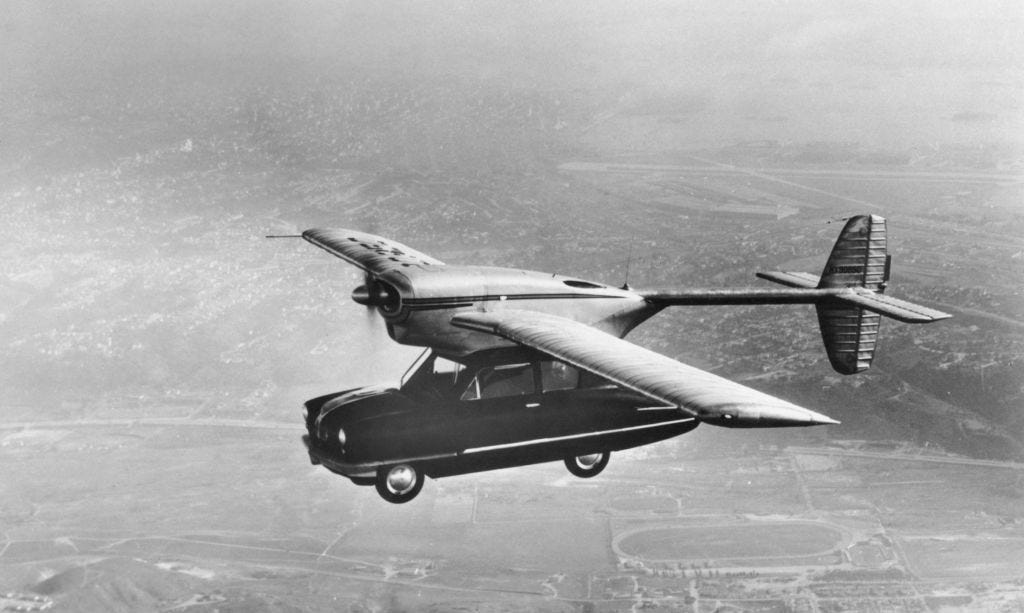
Most aerospace startups fail. But a few change things for the rest of us
Through the decades, I’ve been to pitch meetings and “Imagine if….!” presentations from dozens upon dozens of entrepreneurs and innovators who were convinced that they could, finally, transform the aerospace world.
In reality: most of these startups fail. Even most mature aviation companies struggle to make a steady profit (or do so mainly through military contracts). Airliners topped out in cruising speed many decades ago. In overall door-to-door journey time, air travel keeps getting slower, because of all the delays and hassles of airports and airlines. On the other hand: airliners have become dramatically safer, quieter, and more fuel-efficient than a generation ago, and overall cheaper on a dollar-per-passenger-mile basis.
A few of those dreamers I met and listened to did manage to realize their dreams. I told some of their stories in my 2001 book Free Flight. Over these past 20-plus years, Deb and I have made frequent use of one product of that 1990s era of entrepreneurial vision, and of partnership between businesses and NASA and the FAA. That is our Cirrus SR-22 single-engine, four-seat, parachute-for-the-whole-airplane propeller plane, which I wrote about last month and which was a character in our book and HBO movie.

In the past few years I’ve come across a new group of aviation innovators, from companies that are using the fast-emerging technologies of the moment to introduce genuinely new possibilities for travel. Last month, at a full-day conference in Washington run by the US Travel Association, I had a chance as emcee to interview on-stage three of the people whose companies are developing new systems of air travel. They were:
Josh Giegel of Virgin Hyperloop, which aspires to offer very high-speed, reasonably priced, environmentally sustainable city-to-city travel.
Blake Scholl of Boom Supersonic, which aspires to offer trans-oceanic supersonic travel at much lower prices, and dramatically lower environmental impact, than the now-defunct Concorde.
JoeBen Bevirt of Joby Aviation, which aspires to offer “flying-car”-type battery-powered, zero-emission, shorter-range travel, mainly within or around metro areas.
None of these new companies has yet produced a commercially available vehicle that the rest of us can ride. But as you’ll hear, all three founders say that the commercial-debut moment is within view. Each of their companies have already lined up important partnerships and customer-contracts. (For the record: I have no connection with any of these companies or others, except with Cirrus as a customer. I had met Blake Scholl at a dinner in San Francisco several years ago, when he was just getting started with Boom.)
Here is a listeners’ guide to what they said. I mean it mainly to point you toward clips of their interviews.
1) Virgin Hyperloop, and city-to-city travel
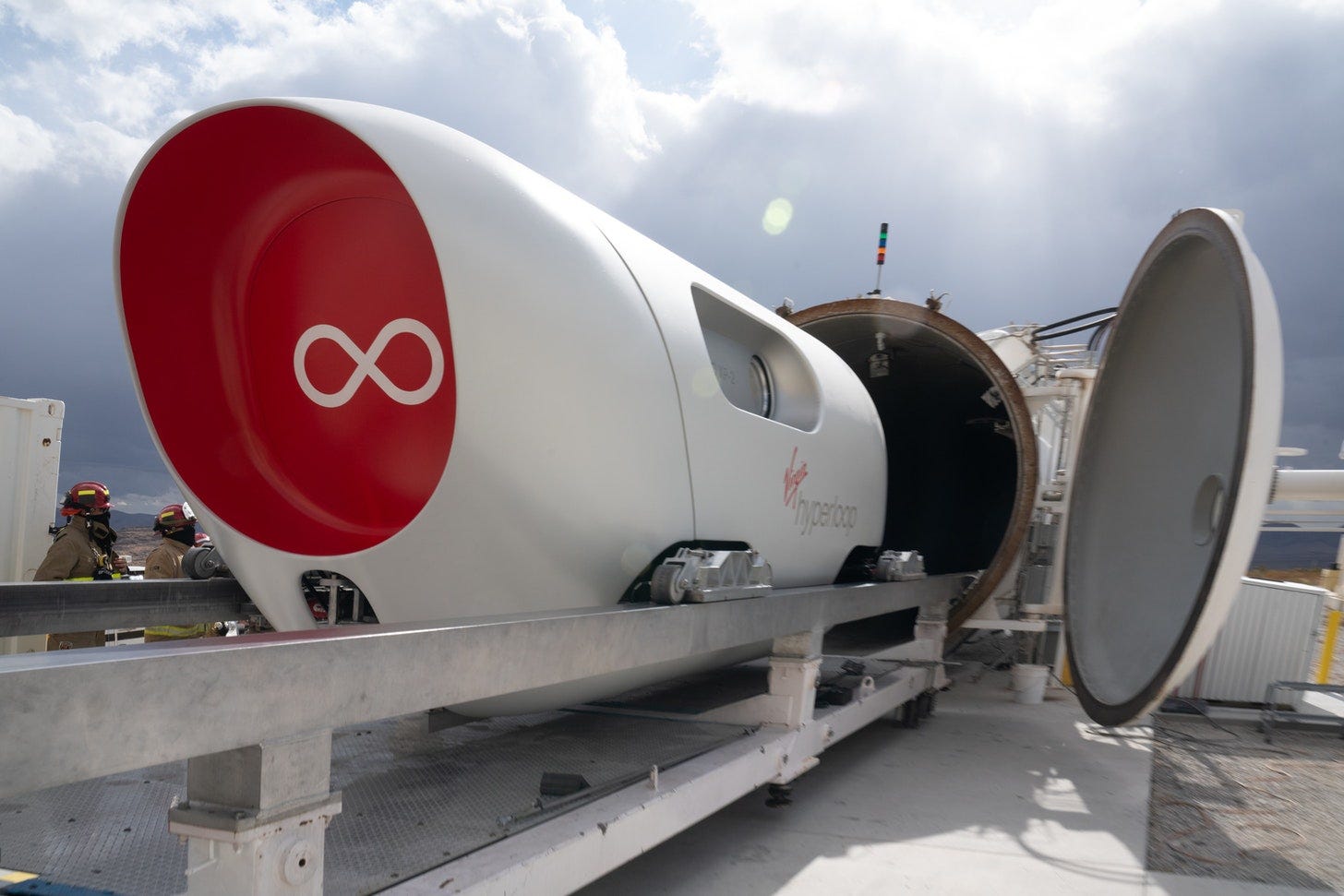
The first Vimeo clip, below, is the presentation by Josh Giegel, co-founder and CEO of Virgin Hyperloop. The Vimeo clip includes set-up and introductions to the whole conference session, by Tori Barnes of US Travel. Giegel begins his presentation at time 4:30 of the video, with maps and charts. At around time 8:20 he shows a clip of himself and one of his colleagues on a first-ever short test ride of the system. It looks like fun.
I start asking him questions around time 17:00, and turn it over to the audience for more questions at around time 31:30.
Around time 14:00 of the video, Giegel explains why this electric-powered system can be far lower-emission and more sustainable than what it would replace. (Even allowing for the construction work in building the network.)
Around time 20:00, I start asking him whether this vision can really come to pass in the United States—as compared with Europe, the Gulf area, or other venues where it has operations, and where “infrastructure” can happen much more quickly.
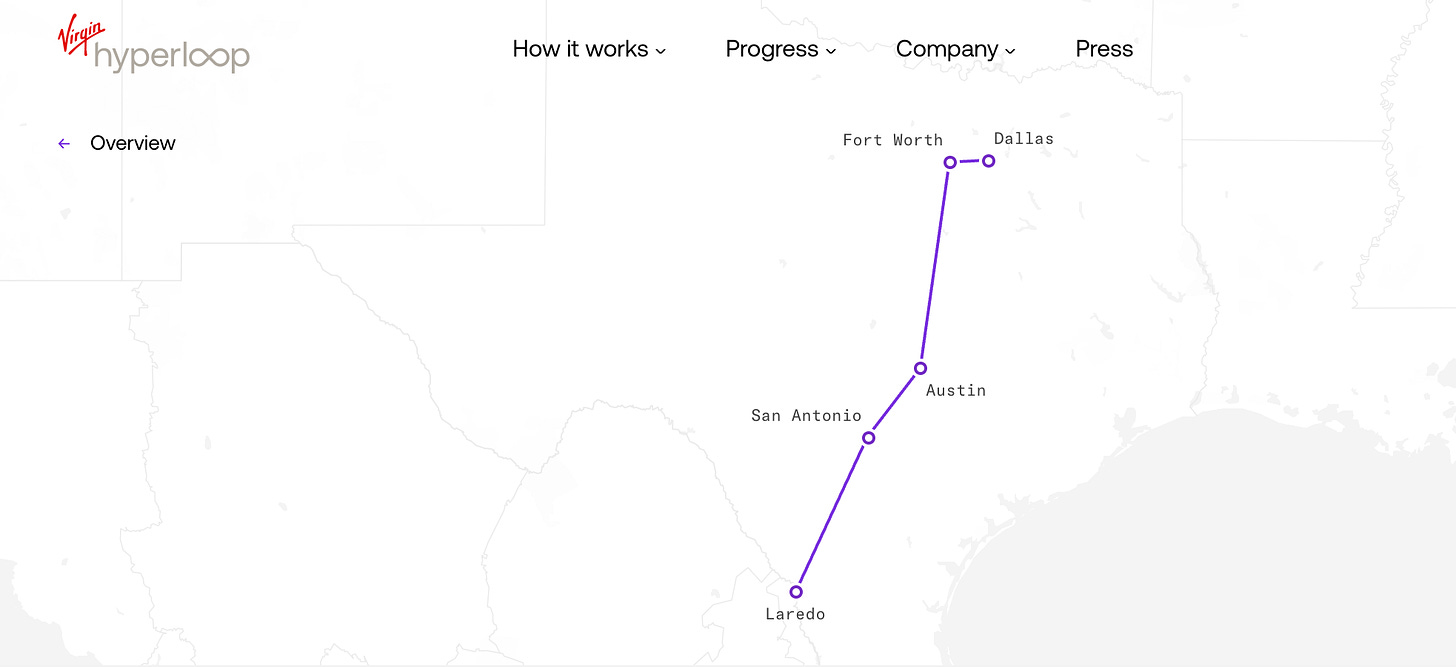
Around time 28:00, Giegel starts talking about the “mass versus class” aspect of this model: Why more passengers would mean lower prices. Check it out and see for yourself.
2) Joby Aviation and 3) Boom Supersonic. One goes across the metropolis, one goes across the ocean
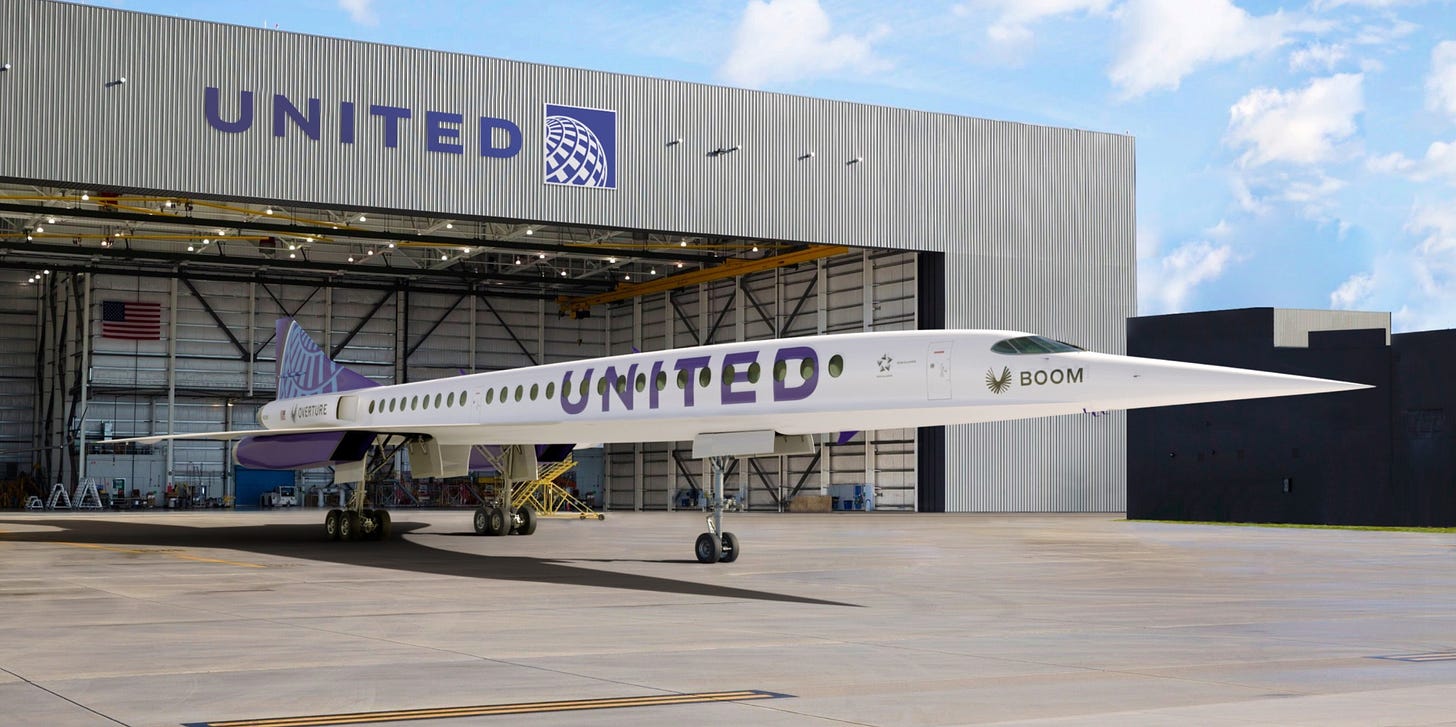
The next session was a combo of two companies. You can see each of their intro videos, and hear the discussion with their two founders and CEOs, in the Vimeo below. (A third listed panelist, Phil Washington, who runs the Denver airport, was not able to attend at the last minute.) A few time-cued tips after the video:
Around time 3:00, JoeBen Bevirt, of Joby, describes how the “energy density” revolution of battery power in the past few years, has finally made purely battery-powered aircraft feasible—and will continue to improve in price, performance, and range. He follows that with a film of his aircraft in action.
Around time 6:00, Blake Scholl, of Boom, explains how he determined early in life to build a sustainable supersonic aircraft — so “the fastest airplane in history wouldn’t be one I saw in a museum.”
Around time 15:00, Scholl lays out the hardest part of designing a plane intended to break the sound barrier: “That’s making it fly nicely [controllably], when it is flying slow.”
Throughout the conversation, both Bevirt and Scholl talk about why environmental sustainability will be the make-or-break standard for their companies, and for the world. For Joby, this will mean battery-powered travel. For Boom, among other things, non-petroleum fuels. You’ll hear about this at length from both of them. They also emphasize several times why airliner contrails are even more important than CO2 emissions as an airline-related climate menace, and how their respective aircraft will reduce contrails. (Joby, because its aircraft will fly so low, and have non-combustion engines; Boom, because its planes will fly so high.)
Both of the companies have substantial real-world business traction. Around time 25:00, Bevirt talks about Joby’s partnership with Toyota (for manufacturing techniques) and JetBlue and Uber (for travel). Around time 28:00, Scholl talks about Boom’s partnerships with Rolls-Royce (a leading engine-maker) and United (which has placed orders for Boom airplanes).
Near the end of the conversation, around time 46:00, Scholl says that if all these companies’ complementary plans succeed, airports will be busier. “If you can get to the airport on a Joby [or Hyperloop], and if you can get around the planet in half the time, you’re going to travel a lot more.
“People's favorite airports tend to be the small ones. We need to learn how to build large airports that people love.” Talk about a dream!
These three are far from the only innovators operating in this field. Recently I “flew” a simulator version of another firm’s vertical-take-off aircraft, and I’ve been in touch with many other companies and entrepreneurs. If I had been able to be at the Springfield-Beckley airport in Ohio just yesterday, November 10, I would have been able to see a live demonstration of many other flying cars and similar craft.
Entrepreneurs of things
Giegel, Scholl, Bevirt, and their growing ranks of competitors-and-colleagues offer an interesting contrast to many of the hero-innovator profiles we’ve gotten used to seeing. These are all entrepreneurs of things. They are working with huge-capitalization, high-risk, heavily regulated, extremely complex pieces of machinery (and software). They’re not just vying for another few seconds of your attention, so they can sell you an ad.
At around time 29:00 of the Joby/Boom video, I ask Bevirt and Scholl what it is like to be their kind of entrepreneur these days.
“It’s a magical moment,” Bevirt says.
Those are words not often heard in today’s DC. You can hear his case for yourself.
Check them out. And I look forward to a session with many of you on Friday.





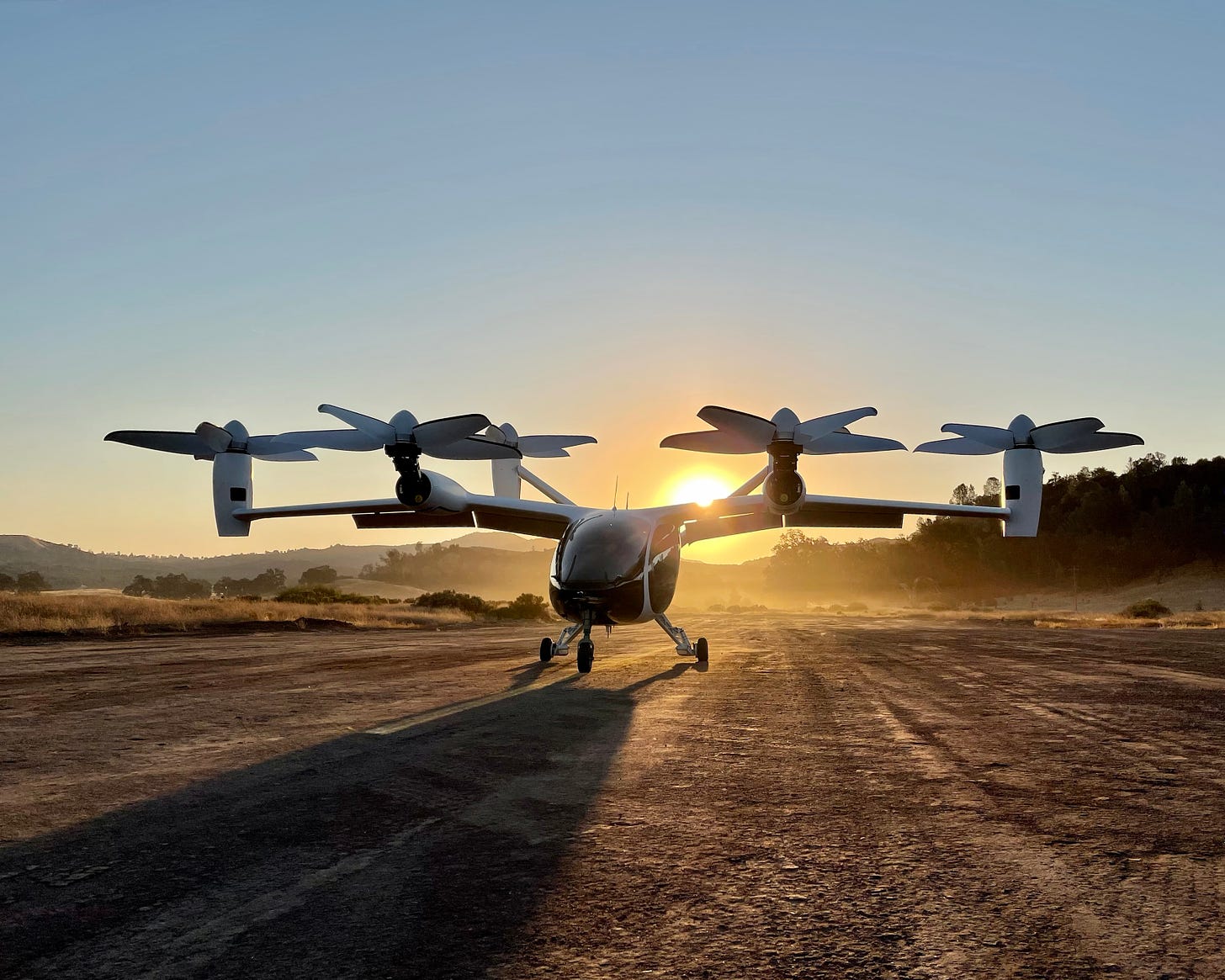
The technology being developed for "flying cars" is impressive. But reporting about the vehicles and services rarely seems to include discussion of other key issues: (1) How will the the national airspace system (air traffic control, etc.) handle so many aerial vehicles crisscrossing the skies, often in the busiest airspace where urban mobility will be especially popular; (2) How will these aircraft be certified, inspected, and maintained, and by whom? The existing infrastructure for maintaining aircraft isn't designed for such a surge in volume, and the FAA can barely keep up with existing requirements; (3) How will people living beneath skies buzzing with (albeit relatively quiet electric aircraft) react when the technology really takes off? These aircraft will be attractive in large part because they take off and almost anywhere. Today fixed-wing aircraft operate from airports (which generate many complaints about noise and other issues), and aircraft rarely crash onto houses, schoolyards, etc. I wrote about some of these issues in 2007 at my blog, here: https://bruceair.wordpress.com/2007/10/26/the-flying-car/
For anybody interested in FAA certification of all-electric airplanes, see the website of Bye Aerospace of Denver which is working with the FAA for certification of the first all-electric airplane (expected for 4th qtr 2022)